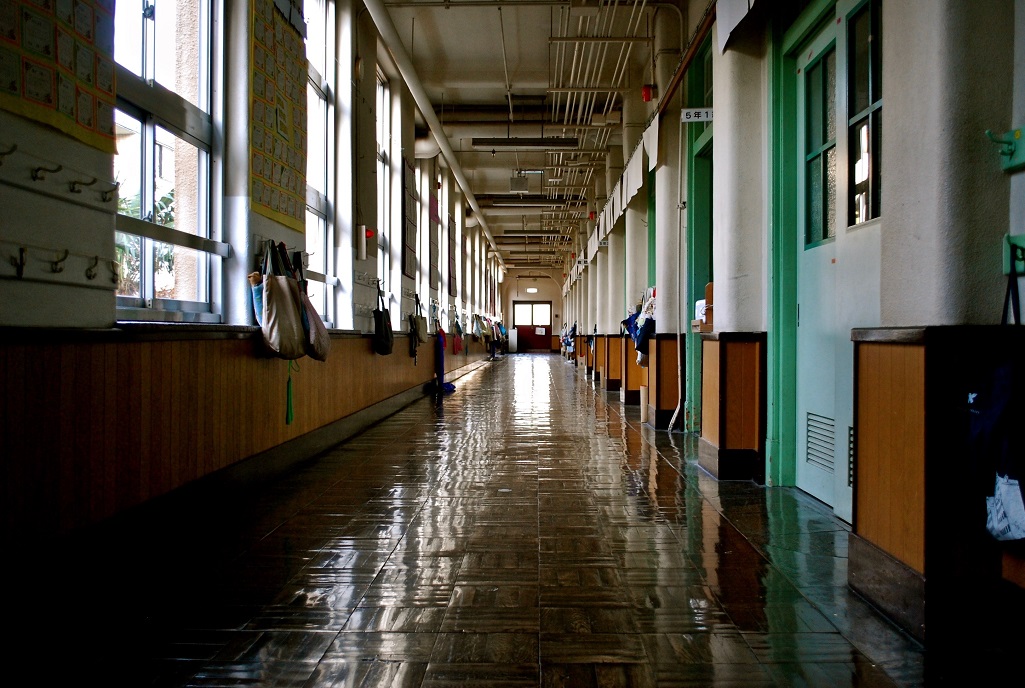States requiring schools to teach sex education have lower teen pregnancy rates; some say high teen pregnancy rates in some Virginia localities are a direct result of the lack of a sex ed requirement in the Commonwealth’s schools.
In the early 2000s, Martinsville, a city of about 13,000 near the North Carolina line, had one of the highest teen pregnancy rates in Virginia. In a typical year, nearly 75 of every 1,000 teenage girls got pregnant.
More than a decade ago, the school opened a teen health clinic, which provides birth control and treats sexually transmitted infections. Since then, the city’s teen pregnancy rate has plummeted.
“It’s just been amazing because I’ve seen success,” said Beth Holyfield, the clinic’s health coordinator. “I think everybody was a little nervous about it because it was Bible Belt area, you know, offering birth control for children.”
Under the federal Title IX program, the Martinsville High School Teen Health Clinic can treat STIs and provide birth control without notifying the student’s parents. Holyfield and two nurse practitioners don’t discuss abortion, but they do routine checks on student weight and blood pressure and administer prescriptions.
According to new data from the Virginia Department of Health, among the state’s 133 localities, Martinsville ranked 16th in teen pregnancy rates in 2018. For every 1,000 teen girls, there were about 21 pregnancies.
Martinsville’s increased access to sex education and contraception coincided with the drop in the city’s teen pregnancy rate. Experts say preaching abstinence over other methods — Virginia’s official policy — has been ineffective. States with more schools teaching contraceptive methods tend to have lower teen pregnancy rates.

Localities vary widely in teen pregnancy rates
Virginia’s teen pregnancy rate in 2017 was 15 pregnancies for every 1,000 teenage girls, according to the U.S. Centers for Disease Control and Prevention. Thirteen states had a lower teen pregnancy rate than Virginia’s. Massachusetts, New Hampshire, and Connecticut all had fewer than nine pregnancies per 1,000 teenage girls.
Within Virginia, the rates vary widely, according to data obtained by Capital News Service from the Virginia Department of Health through a Freedom of Information Act request.
The data showed the number of pregnancies for every 1,000 adolescent girls in each city and county of Virginia. That way, it’s possible to compare localities regardless of population.
Petersburg, 30 miles south of Richmond, had the highest teen pregnancy rate in the state in 2018: about 44 pregnancies for every 1,000 teenage girls.
Norton, a city at the southwest tip of Virginia, was second with 35 pregnancies per 1,000 teenage girls. Lancaster County, along the Chesapeake Bay, followed at about 30 pregnancies per 1,000 adolescent girls.
The cities of Roanoke, Richmond, and Hopewell all had rates around 25 pregnancies for every 1,000 teen girls.
Sex education is optional in Virginia
Under the Virginia Standards of Learning, the state’s public school curriculum, schools in the commonwealth may teach sex education but are not required to do so. State law requires an emphasis on abstinence, but the SOL curriculum also includes recommendations for teaching about contraception and condom usage.
More than 90 percent of Virginia schools teach abstinence. Fewer than 40 percent of the state’s high schools teach contraceptive methods recommended by the CDC, according to the Sexuality Information and Education Council of the United States, or SIECUS.
Virginia Department of Education spokesperson Charles Pyle says the curriculum is designed to promote parental involvement and help students cope with peer pressure during developing stages.
Pyle said classes “include age-appropriate instruction in family living and community relationships, abstinence education, the value of postponing sexual activity, the benefits of adoption as a positive choice in the event of an unwanted pregnancy, human sexuality, and human reproduction.”
Dr. Samuel Campbell, an obstetrician-gynecologist at the Virginia Physicians for Women health-care service, says pregnant teens need more than that.
Pregnant teenagers encounter a specific set of problems because of limited resources and support, Campbell said.
“They have difficulty with transportation. They frequently will seek care later because they are afraid to tell their parents (or) family. They have to continue with their schooling,” Campbell said. “And they have to deal with the social stigma of being a teen mom.”

Most states require sex ed
Thirty-two states require schools to teach sex education, according to the most recent statistics from SIECUS. Eighteen states — including Virginia — do not.
There are seven types of recommended contraception: the birth control pill, patch, ring and shot; implants; intrauterine devices; and emergency contraception. In 2017, no states reported that all of their schools were teaching about all seven methods as well as how to properly use a condom.
According to SIECUS, 19 states reported more than half of school districts teaching students about a variety of contraceptive methods. Fifteen of those states had teen pregnancy rates below the national average of 18 pregnancies per every 1,000 adolescent girls.
Of the 10 states with the lowest teen pregnancy rates, eight required sex ed in all school districts. They include New Hampshire, Wisconsin, and Minnesota, which had pregnancy rates under 15 per 1,000 teenage girls.
The six states with the lowest teen pregnancy rates — Massachusetts, New Hampshire, Connecticut, Vermont, New Jersey, and Rhode Island — reported that three quarters of their schools taught students how to use a condom.
On the other hand, of the 10 states with the highest teen pregnancy rate, seven do not require sex ed in schools. Those states include Arkansas, Texas, and Alabama.
Nationwide, 89 percent of school districts teach abstinence, which recommends that teens put off having sex until marriage. Many schools teach both abstinence and contraceptive methods. That is the case in New Jersey and New Hampshire, where teen pregnancy is below the national average.
Dr. Elizabeth Broderick, a pediatrician in Newport News, calls abstinence education “insufficient information.”
“Abstinence is an excellent way to prevent pregnancy and sexually transmitted infections,” Broderick said. “But eventually, many people choose to become sexually active, and they should have accurate and complete information so they can make the best decision that fits their beliefs and values.”
Broderick says long-acting and reversible contraceptives are generally best for adolescents, but they can be hard to get.
“Access to contraception is difficult for most teenagers,” Broderick said. “Education about anatomy, physiology, contraception, sexually transmitted infections, and consent is appropriate at school and at home.”

‘Educate them on the facts’ to make good decisions
The CDC’s teen pregnancy prevention guidelines say implants and intrauterine devices, or IUDs, are the most effective and reversible birth control methods. Broderick says these are more difficult to obtain than condoms or spermicide because they require a trip to the doctor and a prescription.
Dr. Natalie Dogal, an OB-GYN with Virginia Physicians for Women, said talking about contraception is important for preventing teen pregnancy. She said she discusses contraceptive options with all her teen patients.
“They tend to have heard good or bad stories from friends, parents, or from reading online, and I like to educate them on the facts to help them make good contraceptive decisions,” Dogal said.
According to SIECUS, about 40 percent of male and female high school students nationwide report having had sexual intercourse.
Nationally, the teen pregnancy rate has decreased in recent decades. According to data from the CDC, the rates dropped by 50 percent from 2005 to 2017.
Nearly a third of teen moms reported not using contraceptives because they didn’t think they could get pregnant. Another quarter of teen moms reported that their partners did not want to use contraception.
“Many teenagers think they are invincible,” Dogal said. “That includes thinking they will never be the one who gets pregnant or gets an STI.”

Resources for Teen Mothers in Virginia
The Virginia Department of Health has resources for first-time teen mothers. In the “Resource Mothers” program, a community health worker develops a supportive mentoring relationship with the teen and her family. The free resources include information about prenatal care and health care, assistance finishing school, and tools to avoid drugs and alcohol. Mothers can also sign up for free text messages on prenatal and infant care.
The Healthy Teen Network has a variety of resources for teen parents across the country, including #NoTeenShame, “Mom, Dad — I’m Pregnant,” and Healthy Families America.
To find a health assistance program near you, call 1-800-311-BABY. This will connect you to the nearest health department. For information in Spanish, call 1-800-504-7081.
The U.S. Bureau of Maternal and Child Health has resources for women nationwide. The programs and initiatives include home visiting, which provides at-risk pregnant women tools for mother and child health, raising children, and preventing neglect. The bureau seeks to promote child development and encourage positive parenting.
Planned Parenthood has a webpage for teens to get information about sex, puberty, pregnancy, and birth control, as well as a private chat function for additional questions.
Planned Parenthood has health centers in Charlottesville, Richmond, Hampton, and Virginia Beach. There are also two health centers in the Washington, D.C., area.
How We Got and Crunched the Data
For this report, we downloaded teen pregnancy rates for each state from the U.S. Centers for Disease Control and Prevention.
In addition, we needed the teen pregnancy rates for each city and county in Virginia. The Virginia Department of Health posts such data on its website; however, at the time, the most recent statistics available were for 2017.
We filed a Freedom of Information Act request with the VDH, asking for the 2018 data. The department emailed us the file we requested and then posted it online.
The VDH provided the data as PDFs. We exported the data as an Excel file and cleaned up column headings and other formatting. We have posted all of the data we obtained from the VDH and CDC.
One question we wanted to explore was whether there was a relationship between teen pregnancy rates and the sexual education curriculum taught in schools. To examine this on the national level, we used 2017 data from the Sexuality Information and Education Council of the United States.
We compared the council’s data, which explains how comprehensive sex ed is in each state, with the pregnancy rates from the CDC.
Written by Hannah Eason and Emma North, Capital News Service. Top Photo by kyo azuma on Unsplash.



